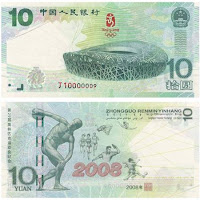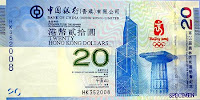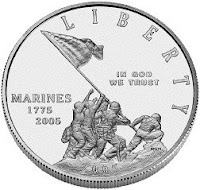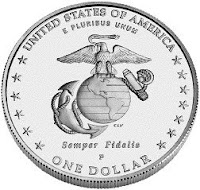Oct 3, 2008 | coins, commemorative, legislative
After the Senate passed their version of the Emergency Economic Stabilization Act (H.R. 1424, commonly known as the “Wall Street Bailout Bill”), the upper house went into “clean up” mode. Clean up mode is when congress pushes lesser, non-controversial bills through the body. As part of that clean up, the Senate passed S. 2579, United States Army Commemorative Coin Act of 2008.
The bill calls $5 gold coins with a limit of 100,000 minted, 500,000 $1 silver coins, and 750,000 clad half-dollars commemoratives in 2011 to recognize the founding of the United States Army in 1775. “The design of the coins minted under this Act shall be emblematic of the traditions, history, and heritage of the United States Army, and its role in American society from the Colonial period to today.”
Coins will include a $35 surcharge on the gold coin, $10 for the silver dollar, and $5 for the clad half-dollar will be paid “ to the Foundation to help finance the National Museum of the United States Army.”
Before the can become law, it must pass in the House of Representatives and signed by the president. Even though it is the same bill as H.R. 5714 that has 348 cosponsors, there is no guarantee that the lame duck session that will meet after the election will take up this measure.
Oct 1, 2008 | administrative, commemorative, legislative
As part of the clean-up before the Senate expected to leave for their fall campaign, H.R. 3229, National Infantry Museum and Soldier Center Commemorative Coin Act, and H.R. 5872, Boy Scouts of America Centennial Commemorative Coin Act, were passed by unanimous consent. Both bills will be sent to the president for his signature.
H.R. 5872 will authorize the Mint to strike one dollar proof and uncirculated silver coins to commemorate the 100th Anniversary of Scouting in the United States in 2010. The bill stipulates that the coins can be only struck at one Mint facility and would be distributed starting February 8, 2010. A $10 surcharge will be added to the price of the coins that will be paid to the National Boy Scouts of America Foundation.
National Infantry Museum and Soldier Center Commemorative Coin Act calls for uncirculated and silver dollar commemorative coins, struck at the West Point Mint that would be “emblematic of the courage, pride, sacrifice, sense of duty, and history of the United States Infantry.” Coins will be issued in 2012 and the $10 surcharge will “be paid to the National Infantry Foundation for the purpose of establishing an endowment to support the maintenance of the National Infantry Museum and Soldier Center following its completion.”
The president is expected to sign both bills.
ADMINISTRATIVE NOTE: Regular readers know that I like to keep up with the numismatic legislation. One of the sites I use is GovTrack.us, a site that aggregates a lot of legislative information for political junkies, like me, to use. They recently released a widget service that allows me to add legislative information to websites. I am taking advantage of this service on the right side of this page in the box with the title “Coins and coinage.” We can watch all numismatic-related legislation together.
Sep 29, 2008 | commemorative
 Winston Elizabeth & Windsor, a company from Birmingham, UK, has struck a limited edition Barack Obama commemorative medal (most stories mistakenly call this a coin) proclaiming Sen. Obama the next president.
Winston Elizabeth & Windsor, a company from Birmingham, UK, has struck a limited edition Barack Obama commemorative medal (most stories mistakenly call this a coin) proclaiming Sen. Obama the next president.
The company sold 300 limited edition silver medals to the Democratic Party to hand out to members of the campaign. It was reported that the contract was worth £100,000 (approximately $198,500).
WEW is planning on striking more of these medals if Obama is elected president in silver, gold, and platinum. The company is expecting a big windfall from this venture.
While I find the concept of an Obama coin amusing, the reaction has been more amusing. From people close to the John McCain campaign to the right wing media, the mock indignation borders on hysterical. It seems that they are angry because the McCain Campaign and the Republican National Committee did not think of this first.
It is not a collectible I would buy, but the bloviating from both sides is funny.
Image courtesy of The Birmingham (UK) Post
Sep 14, 2008 | commemorative, history
 The War of 1812 had been running for two years when the fighting escalated in Baltimore Harbor around Fort McHenry. American Prisoner Exchange Agent Colonel John Stuart Skinner sent by the War Department to negotiate the release of Dr. William Beanes. Dr. Beanes was allegedly mistakenly arrested with a group of rowdies as he walked to his home.
The War of 1812 had been running for two years when the fighting escalated in Baltimore Harbor around Fort McHenry. American Prisoner Exchange Agent Colonel John Stuart Skinner sent by the War Department to negotiate the release of Dr. William Beanes. Dr. Beanes was allegedly mistakenly arrested with a group of rowdies as he walked to his home.
On Skinner’s way to meet Vice Admiral Alexander Cochrane, Rear Admiral Sir George Cockburn, and Major General Robert Ross on the HMS Tonnant, he stopped at the home of noted lawyer Francis Scott Key and asked for his assistance.
Col. Skinner and Key were welcomed by the British command on September 13, 1814 and was invited to stay for dinner. After secure the release of Dr. Beanes but were not allowed to return to Baltimore. The British felt that Col. Skinner and Key had learned too much about the British forces. Col. Skinner, Key, and Dr. Beanes were provided guest accommodations on the HMS Tonnant.
The Battle of Baltimore began after dinner and raged overnight through the next morning. On September 14, 1814, when the smoke cleared, Key saw the Stars and Stripes still flying over Fort McHenry. Following the battle. Col. Skinner, Key, and Dr. Beanes were allowed to return to Baltimore on their own boat. During the trip, Key wrote a poem entitled “The Defence of Fort McHenry”
On September 20, 1814, Key had the poem published in the newspaper Patriot. After publication, Key set the poem to the tune of John Stafford Smith’s “The Anacreontic Song,” a popular drinking song written for London’s Anacreontic Society. The combination was renamed “The Star Spangled Banner.”
“The Star Spangled Banner” was first recognized by the Navy in 1889. In 1916, President Woodrow Wilson signed an executive order to recognize “The Star-Spangled Banner” as the national anthem. Finally, President Herbert Hoover singed a congressional bill officially making the song the United State’s National Anthem (36 U.S.C. §301).
In June 2007, Rep. Dutch Ruppersberger (D-MD) introduced H.R. 2894, Star-Spangled Banner and War of 1812 Bicentennial Commemorative Coin Act. The bill calls for the minting of 350,000 silver $1 coins “in commemoration of the bicentennial of the writing of the Star-Spangled Banner and the War of 1812.”
The bill calls for the “design of the coins minted under this Act shall be emblematic of the War of 1812 and particularly the Battle for Fort McHenry that formed the basis for the ‘Star-Spangled Banner’.” A $10 surcharge (total of $3.5 million) will be paid to the Maryland War of 1812 Bicentennial Commission.
H.R. 2894 passed the House of Representatives on May 15, 2008. It was received by the Senate on May 19, 2008 and eferred to the Committee on Banking, Housing, and Urban Affairs.
Image of Fort McHenry courtesy of the Maryland Office of Tourism
Aug 23, 2008 | commemorative, foreign, notaphily
I am not a big fan of the Olympics. There are certain sports that intrigue me, but the drama of these games have drawn me in. Whether it is Michael Phelps, Dara Torrez, the beach volleyball teams, or even the running of Ussain “Lightning” Bolt, I found these games intriguing. I do understand the political aspects of the games and the comparison that I and others have to the 1936 Berlin Olympics, but that is not why I am writing today.
 Numismatically, the 2008 Beijing Olympics has produced interesting collectibles. One collectible many have missed is a 10 Yuan note with an image of the The National Stadium, nicknamed the Bird’s Nest, rather than the traditional image of Chairman Mao Tse-tung. The reverse has the primary image of a discus thrower and smaller vignettes of other activities.
Numismatically, the 2008 Beijing Olympics has produced interesting collectibles. One collectible many have missed is a 10 Yuan note with an image of the The National Stadium, nicknamed the Bird’s Nest, rather than the traditional image of Chairman Mao Tse-tung. The reverse has the primary image of a discus thrower and smaller vignettes of other activities.
Although these notes are being printed as Renminbi, People’s Money, it is being reported that just enough of the notes are being printed for distribution within the Olympic Village. Traditional 10 Yuan Renminbi including the portrait of Chairman Mao will continue to be distributed to the rest of the country.
As of August 22, 2008, 10 Yuan Renminbi is worth US$1.46.
 The Bank of China (Hong Kong) (BOCHK) also issued a HK$20 note (US$2.56). Long lines were reported outside BOCHK offices when the notes were made available to the public. Although 4 million notes will be printed, they are not expected to see circulation. Reports say that 3.76 million notes will be sold in Hong Kong for HK$138 (US$17.68) to HK$1,338 (US$171.53).
The Bank of China (Hong Kong) (BOCHK) also issued a HK$20 note (US$2.56). Long lines were reported outside BOCHK offices when the notes were made available to the public. Although 4 million notes will be printed, they are not expected to see circulation. Reports say that 3.76 million notes will be sold in Hong Kong for HK$138 (US$17.68) to HK$1,338 (US$171.53).
BOCHK will be offering several collecting options that will be offered through authorized dealers.
These are nice options for currency collectors and collectors of Olympics commemoratives.
10 Yuan Note from Reuters/China Daily
HK$20 note from China Daily
Click on the image to enlarge.
Jun 28, 2008 | coins, commemorative, legislative
Yesterday, I was notified by one of my political junkie sites, govtrack.us, that H.R. 6404, a bill to “require the Secretary of the Treasury to mint coins in commemoration of the centennial of the establishment of the Girl Scouts of the United States of America.”
As I write this, the information is so new that it has not been posted on Thomas, the Library of Congress site that shares legislative information with the public. So there is no further information. When the bill is posted, it will be available via this link.
If we look at other commemorative legislation, I speculate that the bill with be a $1 silver commemorative coin that will be available in proof and business strike issues. Since the Girl Scouts were founded in 1912, the coin will celebrate their centennial in 2012. Other than design specifics, the bill will call for the minting of 300,000 to 500,000 coins with a $10 surcharge that will be donated to the Girl Scouts.
We will check back to see how well I played swami!
Jun 22, 2008 | coins, commemorative, legislative
This passed week, the Senate passed S. 2159, NASA 50th Anniversary Commemorative Coin Act, by unanimous consent. The bill was held at the desk, meaning that it was not sent to the House of Representatives for consideration.
The bill is similar to H.R. 2750, which was passed by the House in July, 2007. The significant different between the bills is that the House bill specifies where the coins can be minted and the Senate bill does not. Because the 50th anniversary of NASA is this year, the Senate bill specifies that the coins will be dated 2008, allows the coins to be issued through 2009, and specifies that it does not count against the maximum of two commemorative programs for 2009.
Both bills call for a high relief $50 gold coin and $1 silver coins. For the $50 coin, the obverse will bear an image of the sun and the reverse will “bear a design emblematic of the sacrifice of the United States astronauts who lost their lives in the line of duty over the course of the space program.” There will be a mintage limit of 50,000 gold coins and 300,000 silver coins. The US Mint would be allowed to make bronze medals based on the design of the gold coin.
For the $1 silver coins, the bill calls for nine different obverse designs representing the nine planets of the solar system, including Earth. It appears that congress is not paying attention to Pluto being voted out of the solar system. The reverses of these coins will be “be emblematic of the contributions of the research and space centers.” The bill requires the following:
- On the Earth coin, the reverse will “bear images emblematic of, and honoring, the discoveries and missions of the National Aeronautics and Space Administration, the Mercury, Gemini, and Space Shuttle missions and other manned Earth-orbiting missions, and the Apollo missions to the Moon.”
- On the Jupiter coin, the reverse will “include a scientifically accurate depiction of the Galilean moon Europa and depict both a past and future mission to Europa.”
- For the Saturn coin, the reverse will “bear an image of the planet Saturn on the obverse shall include a scientifically accurate depiction of the moon Titan and depict both a past and a future mission to Titan.”
- For the Pluto and Other Dwarf Plant coins, the reverse will “include a design that is emblematic of telescopic exploration of deep space by the National Aeronautics and Space Administration and the ongoing search for Earth-like planets orbiting other stars.”
The bill also calls for images that would be selected for realism and scientific accuracy.
There will be a surcharge of $50 for the gold coin, $10 for the silver coin, and $1 for the bronze medals. The first $4 million collected will be paid to “NASA Family Assistance Fund, for the purpose of providing need-based financial assistance to the families of NASA personnel who lose their lives as a result of injuries suffered in the performance of their official duties.” The next $1 million of the money collected will be split between the Dr. Ronald E. McNair Educational (D.R.E.M.E.) Science Literacy Foundation and Challenger Center for Space Science Education. Any balance will be given to the Smithsonian National Air and Space Museum for their exhibits.
If done right, this program could create very interesting collectibles. I can see a set with the gold coin in the middle surrounded by the nine planet coins in a display case. Given the current cost of the metals, this set may be more expensive than most collectors can afford. In the mean time, the House and Senate have to work out the differences between the two versions.
Jun 21, 2008 | coins, commemorative, legislative
After being amended by the Senate, the House of Representatives agreed to the changes to H.R. 634, American Veterans Disabled for Life Commemorative Coin Act, on June 18. The bill is now enrolled and is cleared for the White House for the President’s signature.
The bill calls for the striking of 350,000 silver dollars whose design will be “emblematic of the service of our disabled veterans who, having survived the ordeal of war, made enormous personal sacrifices defending the principles of our democracy.” Coins will be issued in 2010. For this commemorative, the $10 surcharge will “be paid to the Disabled Veterans’ Life Memorial Foundation for the purpose of establishing an endowment to support the construction of American Veterans’ Disabled for Life Memorial in Washington, DC.”
Jun 11, 2008 | coins, commemorative, legislative
What does Mother’s Day, the Infantry, and Disabled Veterans have in common? They all had bills passed on Tuesday for the issuing of commemorative coins in their honor.
Following the death of her mother in 1905, Anna Marie Jarvis devoted her life to establishing Mother’s Day as a national, then international holiday. Although there were some celebrations, there were no holidays to celebrate mom. With the financial help of famed clothing merchant John Wanamaker, West Virginia became the first state to recognize Mother’s Day as a holiday in 1910. On May 14, 1914, President Woodrow Wilson signed a presidential proclamation designating the second Sunday in May as Mother’s Day.
To commemorate the 100th anniversary of Mother’s Day, Rep. Shelley Capito (R-WV) introduced, H.R. 2268, Mother’s Day Centennial Commemorative Coin Act. The bill calls for thee striking of 400,000 silver dollars in 2014 where the “design of the coins minted under this Act shall be emblematic of the 100th anniversary of President Wilson’s proclamation designating the second Sunday in May as Mother’s Day.” A surcharge of $10 will be split between Susan G. Komen for the Cure Foundation and the National Osteoporosis Foundation.
H.R. 2268 was passed by a voice vote in the House of Representatives. It must be passed by the Senate before it can be sent to the president for his signature.
Another bill passed by the House and sent to the Senate is H.R. 3229, National Infantry Museum and Soldier Center Commemorative Coin Act. This bill calls for uncirculated and silver dollar commemorative coins, struck at the West Point Mint that would be “emblematic of the courage, pride, sacrifice, sense of duty, and history of the United States Infantry.” Coins will be issued in 2012 and the $10 surcharge will “be paid to the National Infantry Foundation for the purpose of establishing an endowment to support the maintenance of the National Infantry Museum and Soldier Center following its completion.”
On the other side of the Capital, H.R. 634, American Veterans Disabled for Life Commemorative Coin Act , passed the Senate by unanimous consent. Introduced by Rep. Dennis Moore (D-KS) and passed the House on May 15, 2007 by a 416-0 vote, the bill calls for the striking of 350,000 silver dollars whose design will be “emblematic of the service of our disabled veterans who, having survived the ordeal of war, made enormous personal sacrifices defending the principles of our democracy.” Coins will be issued in 2010. For this commemorative, the $10 surcharge will “be paid to the Disabled Veterans’ LIFE Memorial Foundation for the purpose of establishing an endowment to support the construction of American Veterans’ Disabled for Life Memorial in Washington, DC.” The bill passed with a minor technical change that must be approved by the House before it is sent to the President for his signature.
Interesting set of commemoratives for collectors.
May 23, 2008 | commemorative, dollar, US Mint
Following the Civil War, many communities set aside one day to honor those who lost their life in this nation’s worst war. As time went on, many of the celebrations were merged into one Decoration Day. The first day proclaimed as “Memorial Day” was in 1862. Decoration Day was recognized as a federal holiday beginning in 1868 but was not celebrated in the south. Many southern states celebrated Confederate Memorial Day on different dates.
Memorial Day was not widely recognized until after World War II.
Memorial Day was traditionally celebrated on May 30. When the Uniform Holidays Bill (sometimes referred to as the “Monday Holliday Act”) came into effect in 1971, Memorial Day was moved to the last Monday in May.
With overseas wars on two fronts and remembering all of the past conflicts, I would like to take this opportunity to honor the memory of all who gave the ultimate sacrifice for the country. I recognize that without their sacrifice I would not have the freedom to write this blog.

 To honor their service, I re-introduce the 2005 Marine Corps 230th Anniversary Commemorative Silver Dollar. The obverse features the National Marine Corps War Memorial (sometimes referred to as the “Iwo Jima Memorial&rdquo) and the reverse has the Marine Corps emblem. This powerful design allowed the US Mint to capture the 2007 Coin of the Year Award.
To honor their service, I re-introduce the 2005 Marine Corps 230th Anniversary Commemorative Silver Dollar. The obverse features the National Marine Corps War Memorial (sometimes referred to as the “Iwo Jima Memorial&rdquo) and the reverse has the Marine Corps emblem. This powerful design allowed the US Mint to capture the 2007 Coin of the Year Award.
Between now and Monday, please make sure that you take at least one moment to remember those brave men and women.
Images courtesy of the US Mint.






